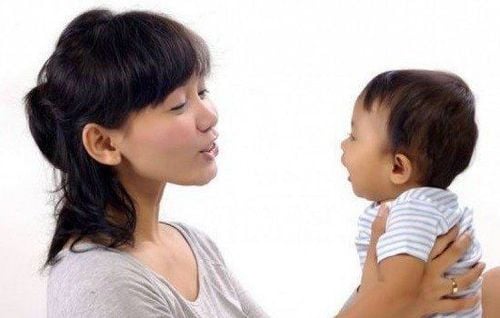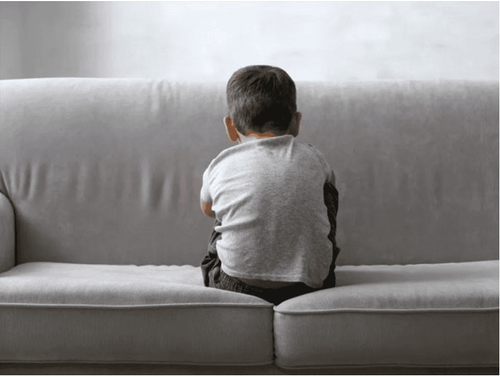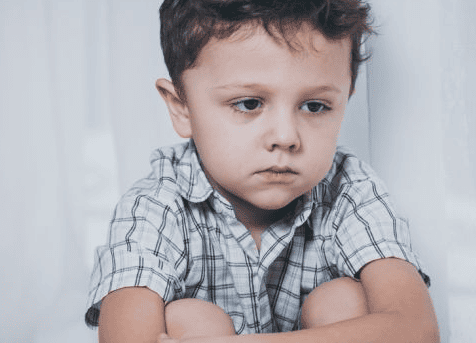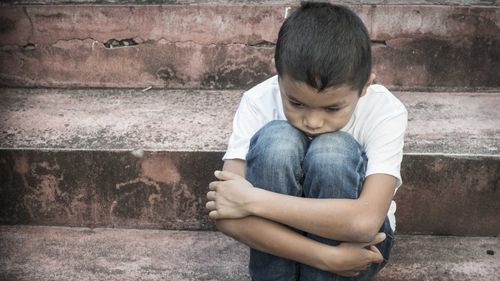This is an automatically translated article.
Posted by Master Music Therapist - Unit of Regenerative Medicine Clinic and Educational Psychology - Vinmec Times City International General Hospital.
Music therapy has long been used to help children with autism spectrum disorders develop language, increase their ability to communicate and interact with people around them. Music therapy for children with autism is music teaching activities such as dancing, singing, dancing, playing musical instruments, folk games, listening to music.
1. The main disability of autistic children in social skills
Experts list 3 main defects of children with autism spectrum disorder in social skills (autistic triad) as follows: [2]
Difficulty in communicating and building friendships. Children with autism just want to live alone, do not like people encroaching on their private world. Most children with autism are unable to use words to express their wants, thoughts, and interests. Particularly, children with autism who can speak are not able to initiate or maintain two-way conversations. Children who talk just want others to hear and don't wait for others to speak, don't care about other people's reactions, don't look them in the eye, don't care about body gestures, gestures, or feelings. appearing on other people's faces, always changing the subject of conversation abruptly and inappropriately. Often times, a child with autism's word use seems more like a mini-professor's lecture than conversation, often offering more detail than attention to the point. Children with autism do not know how to play pretend. For example, they don't know how to spread their arms, pretend to make the plane spread its wings and make sounds like when the plane takes off, don't know how to play police to catch criminals, pretend to be a firefighter, and pretend to feed dolls. The calves eat, the dolls sleep. Because the difficulty in social communication skills of each child with autism spectrum disorder is different, based on the three basic issues above, I offer solutions to overcome each specific problem below.
2. Using music therapy to develop communication
According to Berger, the application of Relaxing Music Therapy to expand communication skills is a clinical therapy that works with brain functions, adaptations, sensory systems, hearing, musical elements and interaction. individual cooperation to promote the social, cognitive and motor domains. [ 5 ]
Stimulating the sensory system is one of the functions that music therapy provides. Each music activity is associated with daily activities. Because music originates from sound, how to teach children with autism spectrum disorder to explore the world by making sounds from the child's movements such as: clapping, shaking objects, rubbing, walking, etc. blowing... with different materials (wood, plastic, metal...) is one of the most interesting exploration games.
Example: Using a plastic water bottle, wash and put in each bottle a different type of grain such as: black beans, rice, gravel, buttons... and then explore with the child how to make sounds with shaking, flapping, squeezing, rolling, tossing, passing... Each bottle will make different sounds by different colors, shapes, and sizes of beads, making children excited, curious, and stimulated. sight, touch, hearing.
In addition, it is possible to stimulate the child's sense of self and vestibular system by hiding toys that make sounds (music comes from the radio, phone or music box) for children to find.

Instructing young children to play with their own fingers is also a very meaningful activity to stimulate social interaction with others.
Example: Poem "Five small beans"_ Composed by: Phung Ngoc Ha
Five small beans in a shell (Raise 5 fingers to move and then put 2 hands together, so that the fingers are interlaced together)
Day one, day two keep growing (Raise 1 finger, 2 fingers up)
They grow, then they grow, then they keep growing (read from small to larger, spread 2 hands and gradually drift apart)
Until one day the shell broke and hit PAP (Read aloud and clap your hands together on the last word "Bop" of the card)
In addition, the use of rhymes and the use of Reading aloud/small, fast/slow, combined with body movement by clapping hands, stepping feet or touching body parts is also one of the ways to stimulate senses to increase social interaction. association, creating a connection between children and players.
3. Use therapeutic music to express your desires, thoughts, and interests
Language is the foundation for developing social skills. Lorna Wing says that all children and adults with autism have language problems. Their language may be impaired in grammar and vocabulary even if they are able to define words correctly. Their language barrier, however, is their use of language in social interactions (pragmatics) regardless of the language they use. [ 6 ]
Where language disagrees, there is music instead. Music is a way to share feelings and emotions through melodies, rhythms, sounds, harmony... So use relaxing music therapy for autistic children to connect and help autistic children Expressing wishes and thoughts through non-verbal language in the following ways:
Observe to learn how to enter the child's world and be accepted by the child. You can use vocals and musical instruments to play melodies and songs that are familiar to children or simply use toys and percussion instruments to create sounds to attract children's attention. Repeat that melody, rhythm, sound many times, consecutively, continuously so that the child can feel it Closer so that the child can easily see and touch the instrument Suggestions for the child to participate in the activity Imitation the sound the child makes (if any) Changes in rhythm, different from the original sound, and repeats Observe the child's reactions and feelings Stop and wait for the child's reaction (see if the child wants to continue) Make the sound the child wants as soon as the child responds want to continue by any means of expression: Speak, gesture, make eye contact... Start taking turns, stop wait, play alternately, respond with children. The brains of children with autism work differently. Children process information about the world differently from everyone else. Music puts children with autism at ease. Listening to or creating music makes the senses all focus on doing, this helps develop cognition, promotes language. Music is also a powerful motivator to stimulate children's social interaction, attention, emotional expression, communication, and motor development.
Children can use relaxing music therapy to promote communication with others because music is a means of expressing and sharing emotions by means of techniques such as: reciprocal, peer-to-peer, prompting contrast, contrast... Just one instrument, children can also use it to interact and combine with others through concerts, duets... Children learn how to communicate without words by connecting emotionally to create sounds that blend with others.

4. Using music therapy to develop pretend play
Pretend play has many names such as: imaginative play, creative play, symbolic play... Pretend play skills start from 11 to 18 months of age (in children with normal development). In pretend play, children play “as if” something or someone is real. The child is creating a situation where more is happening than is happening. Pretend play is a thinking skill, to be able to play pretend, children must make sense of what is happening.
The use of Music Therapy to develop pretend play skills in children is done in a number of ways:
Instruct children to listen to sounds and imitate making sounds of animals, objects, events objects, phenomena... by expressing by voice, body movements or playing musical instruments. Let the child use the object or himself and pretend to be something else. Example: Imitating the sound of a rooster crowing, a lion's roar, a rat's sound, a car horn... imitating the form of a natural phenomenon such as the wind blowing (swinging gently to the sides)... play musical instruments, play the piano or drum very loudly when listening to the heavy rain, play the guitar or drum very softly when the rain falls gently... Instruct children to listen and move along with children's songs and sounds The sound of an instrument has the content describing the attributes of animals, objects, phenomena... Let the children move along with the movements contained in the songs or music. Example: Teach children to listen and move according to the sound of the piano to imitate the movement of animals: Play the piano with a low sound, slow, heavy rhythm to describe the turtle's movement and direction Lead the child to sit down and crawl slowly like a turtle. Play the piano with a high-pitched, fun, bouncy, fast-paced sound to depict the rabbit's movements and instruct the child to stand up, place their hands over the rabbit's ears, and jump on both feet at the same time.
Use music labels for children to flexibly change the way they describe animals, things, and phenomena. Example: Use a drum and hit the drum hard when describing a rat that hunts during the day. But when night fell, he had to go very quietly so as not to be detected by anyone, so he knocked on the drum very gently, very softly.
Using music without lyrics, with melodies, contrasting rhythms, creating images to tell musical stories with characters, having personality and guiding children to imitate, express and create themselves in a young way want.
Neuroscientist Oliver Sacks_ Author of Musicophilia said: “Music provides something no other drug can do, to speak, to move, to live. Music is not expensive, but necessary!”.
Bellini emphasizes “You can't teach autistic children social skills if you don't know what you should teach them! Not all children with autism need to be treated in the same way, and not all children with autism need to be educated in the same social skills.” Therefore, music must be used appropriately, according to the development of each child as well as interests, sensations with sound, sensory acumen... through assessment to understand and choose The volume, form, and genre of music suitable for the development of each child are effective.

The Psychology-Educational Unit - Autism, Vinmec Times City International General Hospital is a pioneer in applying scientific and artistic methods to assess and treat children with autism, with high efficiency.
Areas of intervention to educate children with autism at Vinmec:
Pediatric psychiatry Clinical psychology - educational psychology Special education Speech therapy Meditation - yoga therapy Music therapy Fine art therapy Doctors Doctors, therapists and teachers at the Center are trained at prestigious schools: University of Education, University of Social Sciences & Humanities – Hanoi National University, Academy of Educational Management ... and regularly learn to improve skills through short-term and long-term training courses at home and abroad with leading experts from the US, Australia, India, Italy.
Please dial HOTLINE for more information or register for an appointment HERE. Download MyVinmec app to make appointments faster and to manage your bookings easily.













